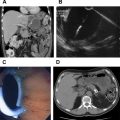Pancreatic neoplasms comprise both exocrine and endocrine cancers of the pancreas, as well as pancreatic cystic lesions. Highlighted in this issue are numerous advances in molecular genetics, imaging capabilities, novel therapeutics, and minimally invasive techniques that have significantly changed the practice of pancreatic neoplasms over the past decade. Advances in the molecular genetics of pancreatic cancers have identified key signaling pathways that are critical in the carcinogenesis of most, if not all, pancreatic cancers, providing an opportunity to exploit these targets on a more personalized level.
State-of-the-art imaging capabilities and advances in the endoscopic diagnosis and treatment of both exocrine and endocrine pancreatic tumors are allowing us to better localize and determine the extent of disease prior to surgical intervention, eliminating the morbidity of many unnecessary operations. New definitions of resectable, borderline resectable, and locally advanced pancreas cancers have led to the more appropriate use of neoadjuvant therapies and selection of patients who will benefit most from surgical resection. Expertise in minimally invasive surgery is minimizing the morbidity of pancreatic surgery, and controversies in the diagnosis and management of cystic lesions of the pancreas are being better delineated.
Articles in this issue are authored by a multidisciplinary group of several national experts across the country in the fields of molecular biology, radiology, surgery, and medical oncology who have been instrumental in the development of many of these recent advances.
Stay updated, free articles. Join our Telegram channel

Full access? Get Clinical Tree




